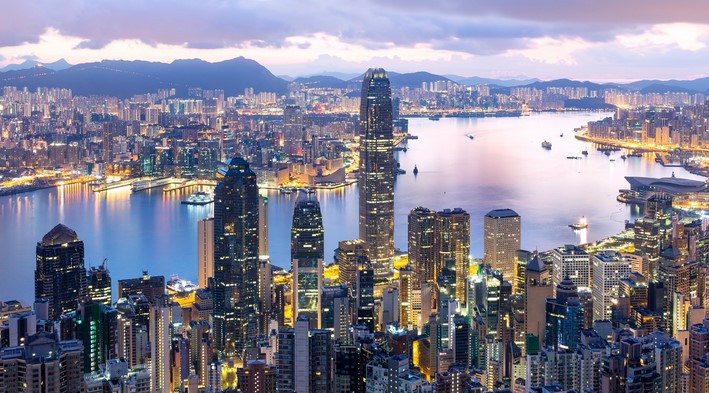Hong Kong Fun Facts: Uncovering Intriguing Tidbits About the Vibrant City

Source:https://www.agoda.com
Hong Kong is often celebrated for its gleaming skyline, bustling street markets, and status as a global financial hub—but beneath its fast-paced exterior lies a wealth of fascinating stories, traditions, and trivia that even seasoned travelers may not know. From cultural curiosities to historical oddities and architectural marvels, exploring Hong Kong fun facts offers a new perspective on this dynamic metropolis. Whether you’re planning a visit or simply expanding your knowledge, these lesser-known details will deepen your appreciation of the city’s vibrant character.
1. Geography and Urban Marvels: A City of Contrasts
Hong Kong’s landscape is a remarkable blend of towering skyscrapers and natural wonders. It offers more than just urban splendor—it is a city where mountains, beaches, and forests lie just minutes from central business districts.
A Vertical City with Green Surprises
Hong Kong holds the world record for the most skyscrapers—over 9,000 buildings exceed 14 floors, surpassing both New York City and Shanghai. Yet despite its reputation for vertical living, approximately 40% of Hong Kong’s territory is designated as country parks and nature reserves. This makes hiking trails like Dragon’s Back and Tai Mo Shan easily accessible and incredibly popular among locals.
Another architectural marvel is the Mid-Levels Escalator. Stretching over 800 meters and rising more than 135 meters in elevation, it is the world’s longest outdoor covered escalator system and serves as an unconventional, yet efficient, mode of public transport.
Limited Land, Ingenious Solutions
Due to limited land availability, Hong Kong has mastered the art of vertical and underground urban planning. One famous example is the “Monster Building” in Quarry Bay, officially known as the Yick Cheong Building. This dense residential complex became globally recognized after appearing in films and on Instagram, symbolizing Hong Kong’s unique residential architecture.
Additionally, the city’s airport—Hong Kong International Airport—was built on a man-made island, showcasing the city’s commitment to maximizing space through innovative engineering.
2. Culture and History: A Fusion of East and West
As a former British colony that returned to Chinese sovereignty in 1997, Hong Kong is a cultural fusion that manifests in everything from language and law to food and festivals.
A Legal and Linguistic Hybrid
Hong Kong operates under a system known as “One Country, Two Systems,” meaning it maintains a separate legal and economic framework from mainland China. English and Chinese are both official languages, with Cantonese being the most widely spoken dialect.
Interestingly, many street signs, legal documents, and educational materials are bilingual, which makes the city highly accessible for international visitors and businesses.
The Tradition of Feng Shui in Modern Practice
Feng Shui plays a significant role in the city’s design and planning. Many commercial buildings incorporate Feng Shui principles to attract prosperity and ward off bad energy. A prime example is the iconic HSBC Main Building in Central, which was designed without internal supporting columns and aligns with favorable Feng Shui elements. Across the street, the Bank of China Tower’s sharp angles have long been debated among Feng Shui practitioners for creating “bad energy.”
3. Everyday Life and Quirky Facts
Beyond the grandeur of skyscrapers and legal frameworks, the daily rhythms of Hong Kong life offer a treasure trove of interesting facts and cultural nuances.
Compact Living and Capsule Hotels
Hong Kong is one of the world’s most densely populated regions, and the high cost of housing has given rise to “nano flats” and capsule hotels. Some apartments are as small as 100 square feet, yet they are ingeniously designed to include kitchens, bathrooms, and storage.
Additionally, rooftop living—converting rooftops of buildings into makeshift homes—is another reality for some residents, reflecting both the creativity and challenges of living in such a tightly packed urban environment.
Octopus Card: More Than Just Public Transport
The Octopus Card is a prepaid, contactless smart card used throughout Hong Kong—not just for buses and trains, but also for paying at convenience stores, fast-food chains, vending machines, and even some clinics. Launched in 1997, it was one of the world’s first major contactless payment systems and remains a model of efficiency in urban mobility.
The Symphony of Lights and Other Nightly Traditions
Every night at 8:00 PM, more than 40 buildings along Victoria Harbour participate in the Symphony of Lights—a multimedia show involving laser beams, LED displays, and synchronized music. It’s one of the world’s largest permanent light and sound shows and serves as a dazzling reminder of Hong Kong’s technological prowess and flair for spectacle.
From vertical cityscapes and scenic hiking trails to unique cultural blends and ingenious urban innovations, Hong Kong offers a treasure trove of intriguing trivia and unforgettable experiences. Whether it’s the integration of Feng Shui into skyscraper design, the world-record escalator system, or the everyday utility of the Octopus Card, each detail reflects the city’s rich character and modern ingenuity. Exploring these Hong Kong fun facts not only reveals hidden layers of the city but also inspires deeper admiration for one of the world’s most compelling urban centers.





